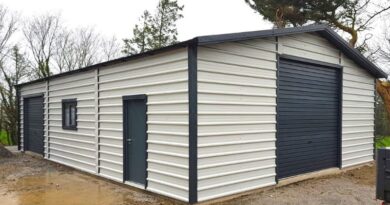How to Create a Meditation Space in Any Home
Meditation makes you happier, healthier, and less stressed. But if you don’t have the space or money to purchase fancy items, don’t worry—you can create your own meditation space in even the tiniest home. All you need are these simple tips and tricks, which will help you get started on your journey to wellness today!
Step 1: Choosing an Area
When it comes to choosing an area for your meditation space, the most important thing is that you feel comfortable and relaxed there. It should be an area where you can sit or lie down without being disturbed. If you have a lot of clutter in your home, it might be helpful to clear out a specific area for your meditation space. Once you’ve chosen an area, you can start to create your space. The best way to do this is by using things that are already around you. Look around and see what you have available: pillows, blankets, candles, crystals, incense, bowls with water (and stones), oils…etc. These are all things that can help make your environment more relaxing and peaceful.
Step 2: Getting Comfortable
One of the most important aspects of meditation is being comfortable. You don’t want to be distracted by discomfort, so make sure you’re in a position that you can sustain for at least 20 minutes. If you’re sitting on the floor, use a pillow or blanket to support your back. If you’re sitting in a chair, make sure your feet are flat on the ground. You can also lie down, but be aware that you may fall asleep! Lying down will allow you to experience deep states of relaxation and even deeper levels of consciousness. If lying down feels too uncomfortable, try resting on your side with one arm under your head and the other hand supporting it.
Step 3: What You Need
First, you need a comfortable place to sit or lie down. This can be a chair, yoga mat, or even just a spot on the floor. Second, you’ll need something to focus on during your meditation. This can be your breath, a mantra, or an object. Third, you may want to have some soothing music or sounds to help you relax. Fourth, candles and incense can be nice for setting the mood. Fifth, if you plan on doing this every day, then it might be worth investing in a meditation cushion or stool. It’s important to find what works best for you and stick with it!
Step 4: Decorating Your Mediation Spot
Now that you have your space, it’s time to decorate it! You can keep it simple with just a few candles or some plants, or go all out with tapestries and an altar. Choose whatever makes you feel most relaxed and peaceful. Remember, this is your space to escape from the outside world, so make it exactly what you need. I recommend making your meditation spot somewhere where you will see it as soon as you walk in the door- like next to your kitchen table.
Doing this will encourage you to take time for yourself before rushing off into doing something else. And don’t forget to leave your space open to change over time! Your practice may evolve and grow over time, which means you may want to try new things or even redecorate. Don’t be afraid of change; instead embrace it as another opportunity for growth and reflection.
In fact, because my husband has a tiny office upstairs, I moved my meditation spot up there when he was working late nights last week.
Step 5: The Actual Practice
Now that you have your space set up, it’s time to get down to the actual practice of meditation. Here are a few tips to help you get started 1) Set aside an hour for each session and start with 10 minutes.
2) Wear comfortable clothes and sit on a cushion or chair with good posture, cross-legged or straight-backed.
3) Let go of distractions and focus on your breath going in and out of your nose without trying to control it. Breathe naturally as if you were standing next to someone who is breathing heavily from exertion. The person may be tired, but she’ll catch her breath soon enough. Just watch her chest rise and fall; she will calm down in no time. Notice what it feels like when you breathe this way: cool air coming into your body, warming up inside before being released again. Your whole body will feel lighter just by watching the flow of air.


